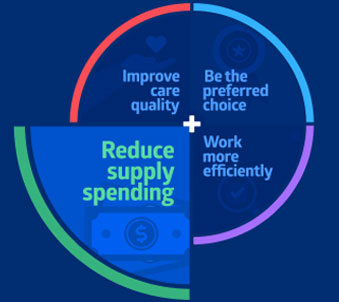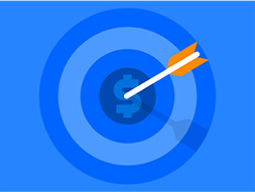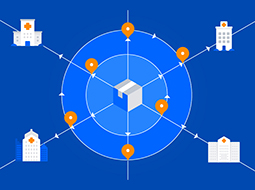
Insight
Price accuracy has always been a top priority across the healthcare supply chain, especially among distributors. Without a high degree of price assurance, inefficiencies in the contract management process create cost and rework for everyone involved—from product manufacturers and group purchasing organizations (GPOs) that negotiate prices to providers who just want the assurance the price is correct on their invoices.
This case study tells the story of how Medline—in a joint pursuit of building a more clinically integrated, resilient supply chain with Stanford Medicine—helped conceive and develop a best-practice model for proactively preventing and correcting pricing inaccuracies that’s proved to be a resource saver for everyone involved.

Organization
Based in Stanford, CA, Stanford Medicine consists of several hospitals, including Stanford Health Care, Stanford Children’s Hospital, Stanford Valley Care, and other affiliations and partners. A leading academic health system and the only Level I trauma center between San Francisco and San Jose, Stanford Health Care opened a new 824,000-square-foot, state-of the-art hospital in November 2019, bringing its total bed count to 604 and total operating rooms to 70. For the seventh consecutive year, Stanford Health Care was named to U.S. News & World Report’s 2021-22 Best Hospitals Honor Roll, which recognizes the 20 highest-performing hospitals nationwide across a variety of medical specialties, procedures and conditions.
Challenges
New to its partnership with Stanford Medicine, Medline was looking at outfitting a brand new 824,000-square-foot hospital building that was under construction and, beyond this, building a more clinically integrated, resilient supply chain that involved:
- Looking at the value of the products and services Medline would provide
- Setting targets for price assurance or price accuracy
- Collaborating with Stanford to understand the back orders and product disruptions
- Putting meaning behind the detailed statistics
Actions
Stanford and Medline used Helios™, an RFID-based technology, to increase visibility upstream, from distribution procurement to delivery to the provider.
Stanford and Medline implemented changes to address price accuracy and price assurance as well as improving product availability.
Stanford and Medline established industry best practices that include:
- A PCN report highlighting price changes that are coming in next month or sooner
- A price assurance report showing where the Stanford item is not matching Medline’s
- Finding root causes or price discrepancies
- Reviewing the PA report with all 36 locations
Results
- Stanford is seeing 98% price accuracy, up more than 20% from 75% price accuracy nine months to a year ago.
- Stanford is understanding the importance of price accuracy—in particular, its downstream effects, such as falling behind in accounts receivable.
Challenges
Stanford and Medline’s relationship goes back to January 2019, when the health system opted for a company that would collaborate more as a partner over its prime distribution supplier. A hospital was opening later that year, and the immediate challenge the partners faced together was outfitting 824,000 square feet of new building.
Beyond this, however, Stanford and Medline shared a mutual commitment to achieving growth by building a more clinically integrated, resilient supply chain. This meant looking at the value of the products and services Medline would provide and setting targets for price assurance or price accuracy. And it involved not simply system data cleanup, but also the collaboration between the teams in understanding the back orders and product disruptions as well as putting meaning behind the detailed statistics.
Michael Kohler, Administrative Director, Procurement Operations and Strategy at Stanford Medicine, was interested in knowing who Medline had in its “ecosphere that is best in class for how they manage their pricing?” A 60-minute Zoom call, where Medline presented and the partners discussed market best practices, and monthly price change notification (PCN) calls eventually led to the configuration of a new process with defined goals and a targeted go-live date.
Action
Defining best practices in price accuracy means managing and communicating how data feed across both systems and how each side is maximizing technology. At the center of all of this is data visibility, reliability and transparency.
Stanford and Medline used Helios™, an RFID-based technology that enables distributors like Medline to provide real-time information and Stanford to change and transform the way they operate within the hospital and provider footprint. The goal, in this case, was to increase visibility upstream from distribution procurement to delivery to the provider. But Helios and other technology platforms have also given Stanford the opportunity to test what’s possible across the healthcare supply chain.
COVID creates delays
Because of COVID’s impact on everyday operations, changes necessary to advancing the new supply chain partnership didn’t really start to materialize until the latter half of the year, when Stanford and Medline implemented changes to address two critical areas.
- Price accuracy and price assurance: From a system standpoint, having the correct contract pricing on both ends plays a key role in the foundational reliability of a distribution relationship. It involves:
- Verifying Stanford and Medline’s system communications
- Analyzing workflow improvements to Stanford’s procure-to-pay initiative
- Improving product availability: The core focus of improving reliability in shortage management depends on having the proper processes in place—managing day-to-day types of activities, such as:
- Overseeing the prioritization of back orders, recalls and how other market disruptions are handled
- Determining cross-functionally product alternatives and or other options
5 best practices for price accuracy
Another complication at Stanford is that the health system utilizes two enterprise resource planning (ERP) systems—one for adult acute care and another for children’s acute care, and at one point, price accuracy for adult acute care was 15% better than it was for children’s acute care. (The difference now is negligible. Overall, price accuracy at Stanford has improved from 75% at the start of its partnership with Medline to a current 98%, aggregated for both adult and children’s acute care.)
Stanford owes this 20%+ improvement to the data management and purchasing teams working on the “procure-to-pay” efforts—a collaboration that’s brought about a process consistent with industry best practice and includes:
- Lean on-key reports—a PCN report highlighting price changes that are coming in next month or sooner. Medline must be aligned with Stanford staff, and information is shared in a very timely manner.
- Price assurance report—weekly report that shows items where the Stanford item pricing is not matching Medline item pricing.
- Finding root causes of pricing discrepancies, such as different pricing being shared by Medline courtesy pricing, GPO pricing, representative pricing, manufacturer pricing, etc. (Price parity is the result of different classes of trades within the system. Not all manufacturers give out parity pricing across all classes of trade.)
- Reviewing the PA report with all 36 Stanford locations and working through processes to get to price accuracy.
- Verifying pricing at the time of ordering—saving time, effort and money
“We’ve created efficiencies relative to the procurement and payment side. Through a new PCN process, which started at the end of 2020 calendar, we have taken our price assurance from around 75% to around 98% — a phenomenal growth in a very short period of time.”
Michael Kohler
Administrative Director, Procurement Operations and Strategy at Stanford Medicine
Results
The price assurance model Medline and Stanford developed together has been managed effectively between the two teams and proved quite successful. The health system is seeing 98% price accuracy, up more than 20% from 75% price accuracy nine months to a year ago.
98% price accuracy
Up more than 20% from 75% price accuracy nine months to a year ago
The process improvements have also helped Stanford understand the importance of price accuracy—in particular, its downstream effects, such as falling behind in accounts receivable. (Orders, POs and invoices were not matching up, resulting in millions of dollars in unpaid bills.)
The key to the success of this model was finding the right people at both Medline and Stanford to proactively correct pricing to find the deltas and close these gaps. The entire process has been a resource saver for everyone involved, and Stanford is now looking forward to its next phase—exploring a True Price accuracy model, which allows for aggregation prices over a designated period of time rather than focusing resources on ensuring the accuracy of every single purchase order.
With the right technology, process and collaboration at play, the possibilities may be endless.





